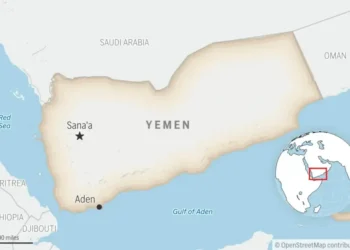After Decades of Brutal Rule, Assad’s Regime Falls: What You Need to Know
In a historic turn of events, Bashar al-Assad’s regime has collapsed, ending over five decades of authoritarian rule by the Assad family. The fall marks a new, uncertain chapter for Syria after years of civil war, atrocities, and repression.
What Happened?
A surprise offensive by a rebel alliance swept across Syria in just 11 days, culminating in the liberation of Damascus. Led by the militant group Hayat Tahrir al-Sham (HTS), the coalition seized major cities, including Aleppo, Hama, and Homs, before reaching the capital.
Key developments:
- Rebel forces declared Damascus “liberated,” forcing Bashar al-Assad to flee to Russia, where he was granted political asylum.
- Videos emerged of prisoners being freed from Assad’s notorious detention facilities and rebels uncovering the opulent lifestyle of the deposed president.
- Russia and Syrian jets attempted to resist the offensive but were overwhelmed by the rebels’ rapid advance.

Who Are the Rebels?
The coalition, named the Military Operations Command, includes diverse factions united against Assad, ISIS, and Iranian militias.
Key leader:
- Abu Mohammad al-Jolani, head of HTS, has a complex history tied to al-Qaeda and ISIS but has sought to rebrand as a pragmatic statesman.
- Jolani has promised to form a government based on institutions and a council chosen by the people, though skepticism remains about his intentions.
HTS, still designated a terrorist organization by the U.S. and others, faces the challenge of balancing its radical past with its stated vision for a unified Syria.

Who Was Bashar al-Assad?
Assad, a former ophthalmologist, inherited power in 2000 after the death of his father, Hafez al-Assad. His regime became synonymous with oppression and war crimes, including:
- Chemical attacks, such as the 2013 sarin gas attack in Ghouta that killed over 1,400 civilians.
- Torture and executions, with reports of mass killings and inhumane conditions in detention facilities like Saydnaya Prison.
- Systematic targeting of civilians, including bombing hospitals and schools.
The regime’s fall ends a dynasty that ruled Syria with an iron grip but leaves a legacy of devastation and displacement.
Why Now?
The Assad regime’s collapse stems from a combination of factors:
- Weakened allies: Russia, preoccupied with its war in Ukraine, and Iran, embroiled in escalating conflict with Israel, were unable to provide crucial support.
- Strategic rebel advances: The vacuum left by distracted allies allowed opposition forces to launch a decisive and coordinated campaign.

What Does This Mean for Syria and the World?
The fall of Assad is a pivotal moment, but it raises pressing questions about Syria’s future:
- Uncertain governance: Can the diverse rebel factions unite to build a stable and inclusive government?
- Security concerns: The history of sectarian violence and extremist ideologies casts doubt on long-term peace.
Regional and global implications:
- Iran’s weakened influence: Assad’s collapse undermines Tehran’s foothold in Syria, a shift welcomed by Israel.
- Russian setbacks: The loss of strategic Syrian bases diminishes Moscow’s Middle Eastern leverage.
- Global reaction: U.S. President Joe Biden hailed the moment as an opportunity for a better future but warned of potential instability.
Syria’s next chapter remains unwritten. While the end of Assad’s brutal rule brings hope, it also leaves the nation at a crossroads, navigating between promise and peril.
This article was rewritten by JournosNews.com based on verified reporting from trusted sources. The content has been independently reviewed, fact-checked, and edited for accuracy, neutrality, tone, and global readability in accordance with Google News and AdSense standards.
All opinions, quotes, or statements from contributors, experts, or sourced organizations do not necessarily reflect the views of JournosNews.com. JournosNews.com maintains full editorial independence from any external funders, sponsors, or organizations.
Stay informed with JournosNews.com — your trusted source for verified global reporting and in-depth analysis. Follow us on Google News, BlueSky, and X for real-time updates.













